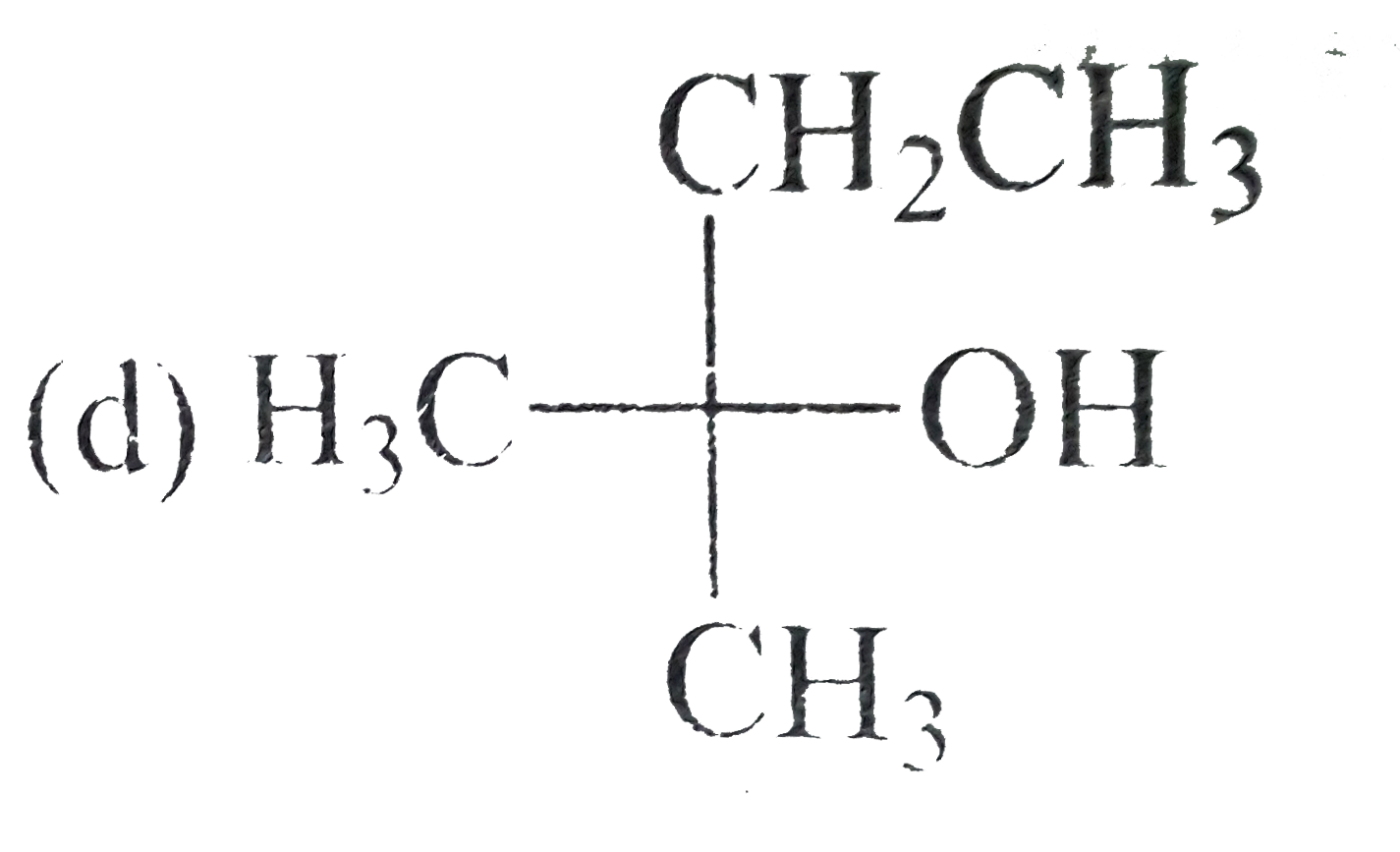Reaction between acetone and methyl magnesium chloride, followed by hydrolysis will give:
A
tert-butyl alcohol
B
iso-butyl alcohol
C
iso-propyl alcohol
D
sec-butyl alcohol
Text Solution
The correct Answer is:A
Reaction of acetone whith methyl magnesium bromide (Grignard reagent) forms a complex which on hydrolysis to gives tert. butyl alcohol.

|
Updated on:21/07/2023
Related Playlists
Knowledge Check
- Question 1 - Select One
Reaction between acetone and methyl magnesium chloride followed by hydrolysis will give:
ASee. butyl alcoholBTert. Butyl alcoholCIsobutyl alcoholDIsopropyl alcohol - Question 1 - Select One
Reaction between acetone and methyl magnesium chloride followed by hydrolysis will give:
ASee. butyl alcoholBTert. Butyl alcoholCIsobutyl alcoholDIsopropyl alcohol - Question 1 - Select One
Reactions between acetone and methylmagnesium chloride followed by hydrolysis will give
Aiso-propyl alcoholBsec-butyl alcoholCtert-butyl alcoholDiso-butyl alcohol. - Question 1 - Select One
Reaction of butanone with methyl magnesium bromide followed by hydrolysis gives ,
A2-methyl -2-butanolB2-butanolC3-methyl-2-butanolD2,2-dimethyl-1-butanol - Question 1 - Select One
Reaction of benzonitrile with methyl magnesium iodide followed by hydrolysis gives :
AtolueneBacetophenoneCBenzoic acidDiodobenzene - Question 1 - Select One
The product obtained on treating acetone with ethyl magnesium bromide followed by hydrolysis is :
ACH3CH2CH2CH2OHBH3C−OH∣C∣H−C∣H2−CH3C D
D
- Question 1 - Select One
The product obtained on treating acetone with ethyl magnesium bromide followed by hydrolysis is :
ACH3CH2CH2CH2OHBH2C−OH∣C∣H−C∣H2−CH3C D
D
- Question 1 - Select One
Formaldehyde when reacted with methyl magnesium bromide followed by hydrolysis gives
AC2H5OHBCH3COOHCHCHODCH3CHO
Similar Questions
Formaldehyde when reacted with methyl magnesium bromide followed by hydrolysis gives
View SolutionGive the structures and IUPAC names of products expected from the following reactions:
(a) Catalytic reduction of butanal
(b) Hydration of propene in the presence of dilute sulphuric acid.
(c)Reaction of propanone with methyl magnesium bromide followed by hydrolysis.View Solution

